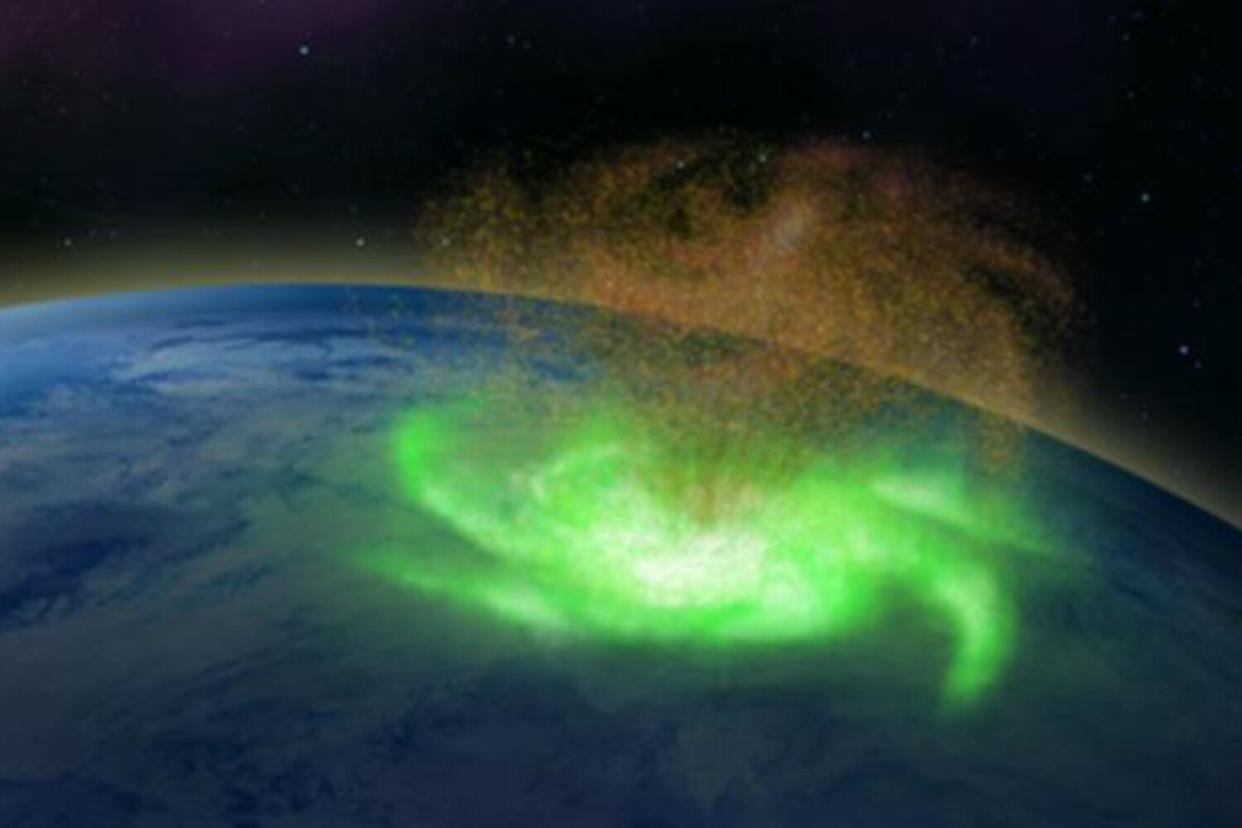Scientists Shed New Light on Massive 'Space Hurricanes' That Form Above North Pole — See the Photos!

Qing-He Zhang, Shandong University Space hurricane
Watch out, Santa!
Last year, scientists announced they'd discovered the presence of "space hurricanes," which are more than 600 miles in diameter with multiple arms that rotate clockwise, and include a calm center. Now, they've learned when, where, and how these cyclone-like auroras form, according to a new study.
After examining more than 300 space hurricanes from 2005-2016, researchers discovered that space hurricanes form at high latitudes near the North Pole, and can spin for eight hours, according to The Washington Post. In contrast, typical auroras last minutes.
Additionally, researchers found they formed at periods of "low solar and otherwise low geomagnetic activity" and were most often seen during summer afternoons.
RELATED: Dad's Ham Radio Hobby Leads to Daughter Calling Astronaut in Space — Hear Their Adorable Chat!

Encyclopaedia Britannica/Uig/Shutterstock Space hurricane
"[They're] occurring where nobody looked and occurring under conditions where nobody thought anything was happening," Larry Lyons, a space physicist at UCLA, told The Washington Post. "It's just a matter of opening your eyes."
Never miss a story — sign up for PEOPLE's free daily newsletter to stay up-to-date on the best of what PEOPLE has to offer, from juicy celebrity news to compelling human interest stories.
Want to see a space hurricane for yourself?
Lyons told The Washington Post that people on the ground could see a space hurricane if they were around 80 degrees north latitude near the North Pole. The physicist added that astronauts could also probably spot them from the International Space Station.
RELATED: William Shatner Reveals Mixed Emotions from Trip to Space: 'Everything I Had Thought Was Wrong'
As for the impact they can have, space hurricanes have been known to affect satellite communication and navigation systems, two co-authors of the new study told the newspaper.
"From both the communications and the navigation points of view, this looks like it will be something we want to add to our predictions for aircraft flying polar routes," Qing-He Zhang, professor at the Institute of Space Science and Physics in China, wrote in a statement.
Although Zhang said "the study of space hurricanes is just beginning," the expert said that they don't pose a great risk to human or spacecraft health.

